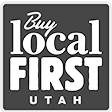The Magna of Kennecott
2013
Rio Tinto, a British mining company with over 67,000 employees worldwide has just announced that it’s going to be giving furloughs and early retirements to many of the 2100 people who work at their Bingham open pit copper mine. Many of those folks live in Magna and towns south of there at the base of the Oquirrh’s (Goshute for ‘wooded mountains’) and They will be affected greatly if the mine stays closed for a long time, as will surrounding businesses.
Magna was settled in the 1850’s and 60’s by Mormon pioneers who called their town Pleasant Green. One of the first folks there was a guy named Abraham Coon who homesteaded a cattle ranch he called ‘Coonville’ at the mouth of a canyon about 5400 South at the base of the mountains there. Locals today know it as Coon Canyon, which has Coon Creek running out of it, through Magna, to the Great Salt Lake. Early citizens of the town were mostly immigrants from Eastern Europe, and the website www.magnautah.com says that “Magna developed a reputation for embodying the American dream-being a town where immigrants’ children gained an education and often moved into professional, business and civic leadership roles in and outside the community.
In 1890 a law was passed that all kids were to receive free educations, and a small one-room school for all grades was built about 4100 South and 8450 West. In the early 1900’s D.C. Jackling established the Utah Copper Company, later becoming what we all know as Kennecott Copper Corp. His company is the one that started digging the now-gigantic open pit mine that has collapsed. They called it ‘Magna Mill’ from the Latin word meaning “great or superior”.
Another mine popped up called ‘Boston Consolidated’ and soon merged with Utah Copper Co. The workers (remember back then-most folks couldn’t afford cars) had to be pretty close to the mine and mills surrounding them. Many lived in a tent city called ‘Ragtown’ just north of the Webster School there today. It was the post office that made ‘Pleasant Green’ change its name to Magna, as the former moniker was too similar to Pleasant Grove. Just like other mining towns like Helper and Price, Utah, workers walked to their jobs-and the towns that did spring up were pedestrian friendly with houses built close to the street amongst churches, saloons, fraternal halls (ELKS, EAGLES, etc.), stores, shops. In Magna there were ethnic sections of the city called “Snaketown, Japtown and Little Italy”.
As brick kilns began popping up in the Valley, citizens were able to begin building more permanent housing. The town grew as the mines grew, and housing started spreading east to West Valley and South. Copperton sprung up in 1926-built by the Utah Copper Company exclusively for its employees and remains the only mining town specifically created for miners- except for Lark, Utah (torn town in 1980 due to mine expansion). In the 1960’s when the dynamite manufacturer “Hercules” started producing rocket motors just south of Magna, the voters approved a bond for sewage and water plants and the town just about doubled in size. By then people in Magna pretty much all had their own cars and they began venturing out of the city to shop and work. Downtown Magna started to fade. But with the new library on Main Street and the sausage pioneers “Colosimos”, still there, it’s a sweet town with a rural feel right outside the Capitol City of salt. Magna is about a 15 minute drive to downtown Salt Lake City and has some of the most affordable housing in the Salt Lake Valley. Last year homes there were selling for $109,400. This year, they’ve jumped 27.9% to $139,950 (WFRMLS). We’ll see how the layoffs affect the housing there in the next 12 months.








